It took about an hour to get out of Auckland – the maps we had were not very detailed, but eventually after stopping at 2 petrol stations to ask directions we found the right road. We decided to follow the Pacific Ocean highway towards our destination of Coromandel. As the name suggests, it followed the coastal road around the top of the peninsula. The views were fantastic along the way – long sandy beaches and mountains covered with pines and ferns. Coromandel was a gold mining town during the late 1800s but is now a sleepy little town, with a small private railway and pottery to visit – usually you get fantastic views from the top of the railway, but again the cloud came down and there was nothing but mist to be seen. A missed opportunity?
The next day we set off for Rotorua, a town with a rich Maori heritage on a volcanic plain with natural geysers and hot springs. We had planned to stop at Hot Water Beach, where you can dig a hole at low tide and sit in the hot water, but unfortunately it decided to pour with rain, so we stopped at the nearby café and had a hot cup of coffee! We could smell Rotorua before we saw it as it reeked of sulphur. Our motel accommodation was amazing, with our own outside hot tub, which most of the motels in the area seemed to offer, as the town’s hot water system is heated naturally by the hot springs. We saw the Pohutu geyser which erupts about 10-20 times a days to a height of about 20 meters; then went to the ‘Devil’s Gate’, where we saw the hot bubbling ground of the natural thermal springs, which are over 100 degrees Celsius and look like vast Martian wastelands. The only plant that grows is the Manuka shrub, from which tea tree oil is extracted and Manuka honey is made. The mud produced is also supposed to have great cleansing and pain-relieving properties. In the evening we went to a Maori cultural show of traditional dance and warrior haka. We also had a Hangi, which is a meal of chicken, lamb and two types of potatoes all cooked underground (supposedly – but there were about 400 guests!). After the meal we went for a trek in the forest with torches to see glow worms. It was obviously a bit of a tourist trap, but very enjoyable nevertheless.
On our next leg of the journey southwards we were heading towards Napier and Hastings. We travelled through areas containing more natural springs, passed lake Talpo – which was made as a result of a volcano blowing its lid off and sits in the remaining crater. We also made a slight detour to visit the Haku falls, which were a brilliant shade of turquoise. We stopped off at Napier, which is famous for its art deco buildings, which were erected after the devasting earthquake of 1931. It made us realise that we have so many art deco buildings in England that we don’t give a second glance – old cinemas for example. We hadn’t been able to get accommodation in Napier as it was the weekend of the art deco festival, so we were booked in a few miles further south in Hastings, which had some art deco, but otherwise was unremarkable.
We went on a half-day wine tour the next day as this area – ie Hawkes Bay – is the second largest wine producing area in NZ after the Marlborough estates. We were on a minibus with 2 Germans (unfortunately the bus driver made a joke about Colditz!) and a group of 11 Aussie and Kiwi friends, celebrating a 60th birthday. They were on a full day tour and we picked them up after lunch, so they were quite raucous by then. We visited 3 vineyards and had an average of 5 tastings in each – most of the Aussie/kiwi group buggered off to a pub in the middle of it as they were dying for a ‘man’s drink’ by then! The bus driver persuaded us to spend the evening in Napier instead of going back to Hastings so that we could see the evening festival and he even arranged our transport back to the motel. The evening was fantastic, with most of the inhabitants dressed up in 1930’s costume and a range of vintage cars on show. There was also an aerobatic display featuring Spitfires and a free open-air concert.
Saturday we drove down to the capital city, Wellington, our last town on the north island. It is known as ‘windy Wellington’ because of the strong winds which can blow. It’s a lovely town, with great energy and modern buildings. We took a ride on the cable car above the city and walked back to town through the Botanical Gardens and saw the famous “Beehive” parliament building. Sunday we spent the day in the brilliant Te Papa museum, which amazingly is free. There was lots on the history of NZ and its natural flora and fauna and an earthquake simulator. In the history section there was a special exhibition on the Scots who emigrated to NZ during the 1900s, which was really interesting.
So now we are crossing the Cook Straits to the South Island and hoping that the journey won’t be as rough as we have been warned! Strangely enough the ship we are on was formerly the Pride of Cherbourg from the Weymouth/Cherbourg route.
The whole journey so far has been stunning, a bit like being on a Disney film set in parts with various special effects scattered around. We also strike up conversations with random other tourists of various nationalities and discuss where we’ve been and where we are going, quite unlike normal British behaviour.
You may have noticed an absence of gastronomic descriptions in this part of the blog, this is mainly because we haven’t really eaten anything out of the ordinary – we’ve self catered a couple of days – supermarket fish and frozen veg; had a very nice Turkish kebab and a good Mexican meal (Dan was happy as he could show off his Spanish!).
Sorry no pictures – NZ internet options are too limited at the moment. Will try to update later.




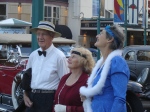
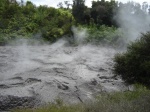
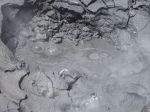

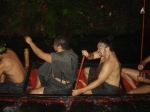
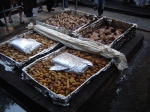


1 comment
Comments feed for this article
February 24, 2010 at 10:56 am
Sam
Sounds like you are having a great time – glad you enjoyed the smell of Rotorua and Te Papa, two of my abiding memories from the North Island. The ferry crossing is pretty good too, eh?
Keep in touch and keep enjoying it. Say hello to Milford Sound for me.